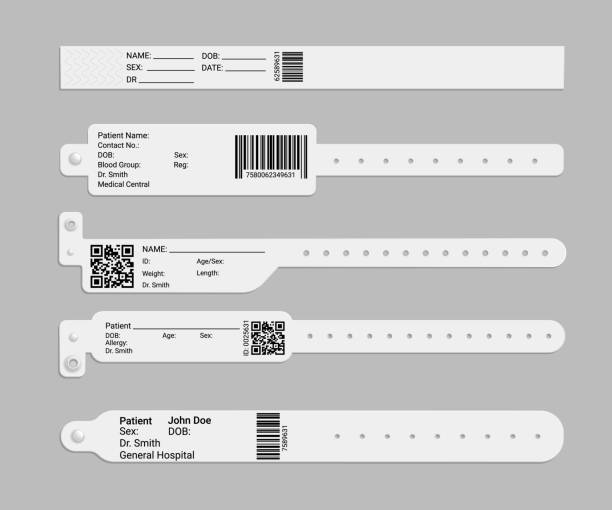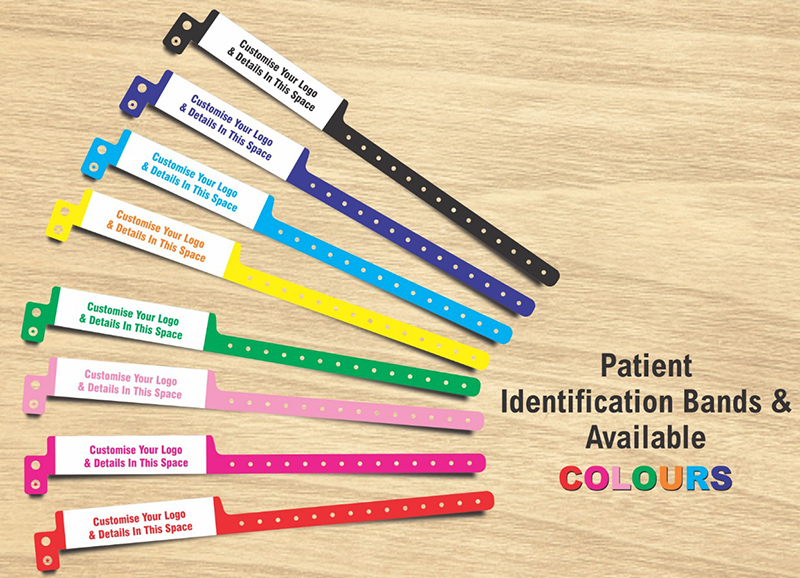Why a Patient Identification Band is Essential in High-Volume Environments like Emergency Rooms
Why a Patient Identification Band is Essential in High-Volume Environments like Emergency Rooms
Blog Article
Discovering the Numerous Sorts Of Patient Identification Band Made Use Of in Clinical Facilities
In the elaborate globe of health care, the crucial function of Patient Identification bands frequently goes undetected. These bands, varying from straightforward paper wristbands to sophisticated RFID bands, create the backbone of Patient safety procedures, ensuring accuracy in Patient Identification.
Comprehending the Importance of Patient Identification Bands
While they may appear like simple devices, Patient Identification bands play a crucial duty in medical centers. These bands work as an important tool for verifying Patient identification, preventing medical mistakes connected to misidentification. The bands usually present important info such as the Patient's name, age, blood group, and any recognized allergic reactions. They enable health care specialists to quickly access this critical information, consequently promoting punctual and accurate clinical therapy. Patient Identification bands additionally help in enhancing management jobs, ensuring exact record-keeping and invoicing. Despite their simpleness, these bands personify the principle of Patient safety and security, a foundation of quality healthcare. Without them, the threat of clinical mistakes, and subsequently, Patient injury, could significantly increase.
Typical Paper Wristbands: Their Usage and Limitations
Typical paper wristbands have actually been a staple in Patient Identification throughout numerous clinical facilities. While their usage prevails, they harbor specific restrictions that might impact their effectiveness in Patient monitoring. This area will focus on the extent of their application and the intrinsic disadvantages associated with their use.
Paper Wristbands: Use Extent
In the realm of Patient Identification, paper wristbands have long held an important role. These bands are generally used in outpatient setups, where the Patient's keep is short-term. The wristbands contain crucial info such as the Patient's name, date of birth, and an unique Identification number. This easy, yet reliable system, enables clinical experts to promptly and precisely identify patients, making certain the appropriate treatment is carried out. Paper wristbands are additionally utilized in emergency situation circumstances, where quick Identification is extremely important. Their use includes occasions like blood donation drives and mass inoculation programs, further highlighting their versatility. In spite of advancements in innovation, the modest paper wristband continues to be a economical and trusted service for Patient Identification in numerous medical care scenarios.
Limitations of Paper Wristbands
Regardless of their widespread use, paper wristbands are not without their drawbacks. Their physical resilience is among the considerable restrictions. Exposure to water, sweat, or misuse can provide them unreadable or perhaps create them to degenerate. In enhancement, paper wristbands commonly do not have the technical abilities of even more modern-day choices, such as barcoding or RFID chips, restricting their performance to simply showing written information. The inability to upgrade or change the information on the wristband is one more shortcoming. Furthermore, if the information is transcribed, clarity can be jeopardized, resulting in potential misidentification. Paper wristbands can cause pain or skin inflammation to some individuals, especially when put on for extensive periods.
Barcoded Wristbands: Improvements in Patient Identification
While Patient Identification has actually long been a vital element of health care, the arrival of barcoded wristbands indicates a significant jump onward. These bands leverage the simpleness of barcoding modern technology, enabling for Patient info to be swiftly checked and accessed. They enhance the rate and accuracy of Patient Identification, lowering the danger of medical errors related to misidentification.
Radio Regularity Identification (RFID) Bands: a Step In The Direction Of Futuristic Medical Care
The advancement of Patient Identification bands has actually caused the development of Radio Regularity Identification (RFID) Bands (patient identification band). These cutting-edge gadgets existing crucial advantages for health care facilities, using a more effective and technologically progressed methods of Patient Identification. The execution of RFID in health care is a considerable action in the direction of a more advanced approach to Patient management and safety and security
Recognizing RFID Bands

RFID Bands: Trick Benefits
Embracing a future where innovation and health care merge, superhigh frequency Identification bands offer several key advantages. Primarily, these bands improve Patient safety and security by giving precise, immediate Identification, thereby reducing clinical mistakes. RFID bands can keep a large amount of Patient information, consisting of case history and allergic reactions, making it possible for customized care. They also simplify management tasks, as the automated data access changes hands-on processes, improving performance and minimizing documents. RFID bands use real-time tracking of patients, essential in risky atmospheres such as surgical treatment or intensive care. Lastly, these bands are resistant and sturdy to ecological elements, guaranteeing regular functionality. In general, RFID bands stand for a significant improvement in Patient Identification innovation, benefiting both individuals and healthcare carriers.
Applying RFID in Healthcare
As we step into a technically innovative period, the execution of RFID bands in healthcare becomes increasingly important. These bands offer a seamless method to track and determine individuals, guaranteeing their security and enhancing effectiveness in therapy procedures. RFID bands use many benefits over standard Identification techniques. They can keep a huge quantity of data, including the Patient's medical background and therapy strategies, which can be quickly accessed by medical care carriers. This information aids medical professionals make notified decisions concerning the Patient's treatment plan. RFID bands decrease medical errors by giving exact Patient Identification, which is vital in protecting against misdiagnosis or incorrect medicine management. Hence, the execution of RFID bands is a considerable step in the direction of enhancing Patient safety and medical care shipment.

Color-Coded Wristbands: Aiding in Quick and Accurate Diagnosis
In the busy setting of a medical center, color-coded wristbands have arised as vital devices for swift and precise Identification of a person's medical problem. These wristbands, worn by people, carry details colors that match to different clinical problems or conditions. This system is made see this website to use immediate visual hints to healthcare companies, improving Patient security and care top quality.
Techniques for Reliable Application and Monitoring of Patient ID Bands
Accomplishing optimum use Patient Identification bands demands a well-structured technique for their execution and monitoring. The initial step entails training all health workers on the relevance of correctly applying and checking out these bands. Hospitals ought to standardize the use of ID bands across all divisions, making sure harmony and minimizing disparities. Normal audits should be conducted to confirm adherence to policies and to remedy any type of variances. Patient education and learning is additionally crucial; patients must understand the learn this here now purpose of the bands and the need for their continuous wear. patient identification band. Last but not least, it's necessary to have a back-up strategy in area, such as barcode scanning or biometrics, to make certain that Patient Identification is never jeopardized.
Verdict
Patient Identification bands are crucial in clinical centers to guarantee safety and precision. Typical paper, barcoded, RFID, and color-coded wristbands each hold unique advantages, varying from cost-effectiveness to advanced information storage and immediate medical informs. Effective application and management of these bands can dramatically minimize medical errors, boost performance, and boost overall Patient treatment. Hence, understanding and making you can try here use of these Identification tools is critical for keeping high standards in healthcare.
These bands, varying from basic paper wristbands to innovative RFID bands, form the backbone of Patient security procedures, making certain accuracy in Patient Identification.The evolution of Patient Identification bands has brought about the introduction of Radio Regularity Identification (RFID) Bands. Generally, RFID bands stand for a substantial innovation in Patient Identification modern technology, benefiting both patients and healthcare suppliers.
RFID bands lower clinical mistakes by giving exact Patient Identification, which is critical in protecting against misdiagnosis or wrong medication administration. Patient education and learning is also important; people should recognize the objective of the bands and the need for their constant wear.
Report this page